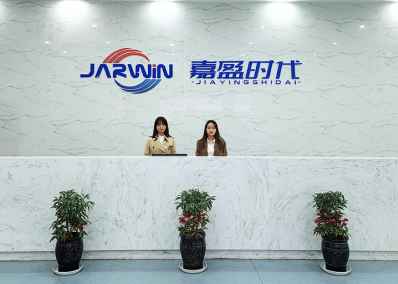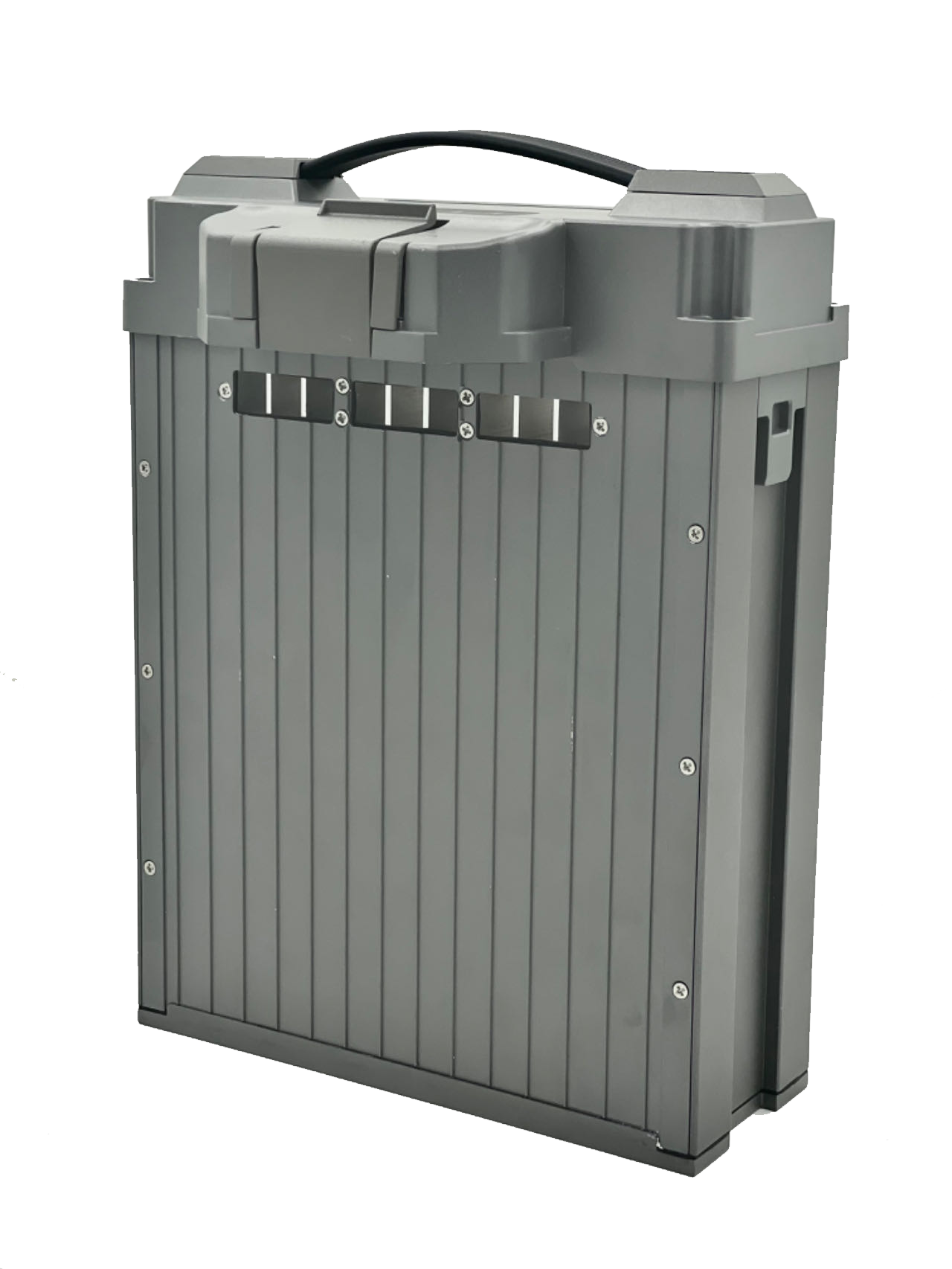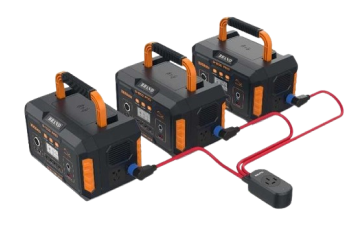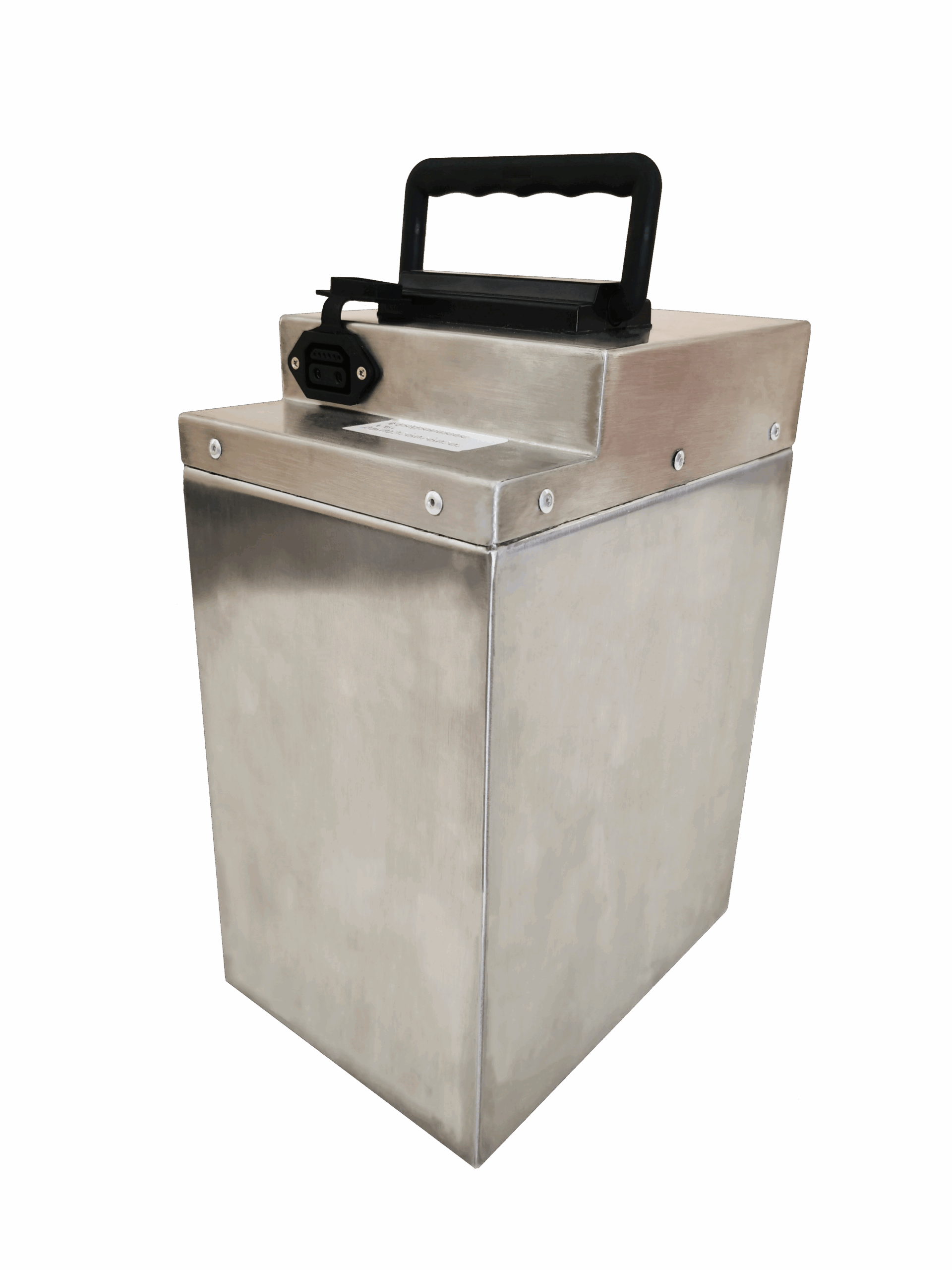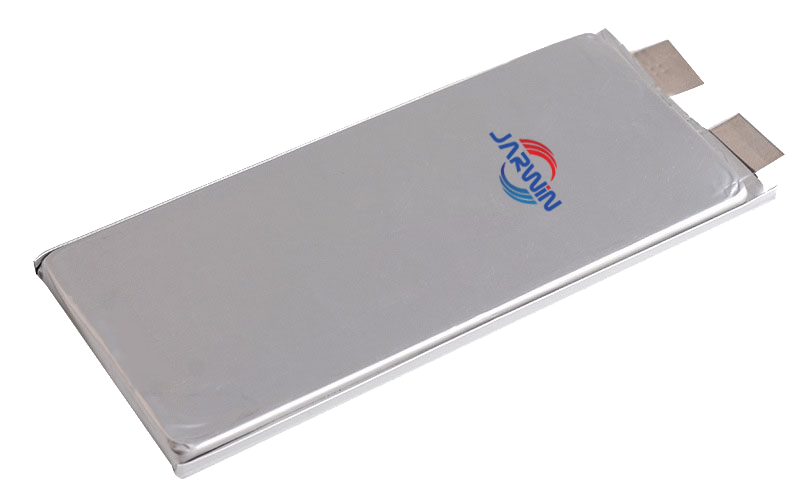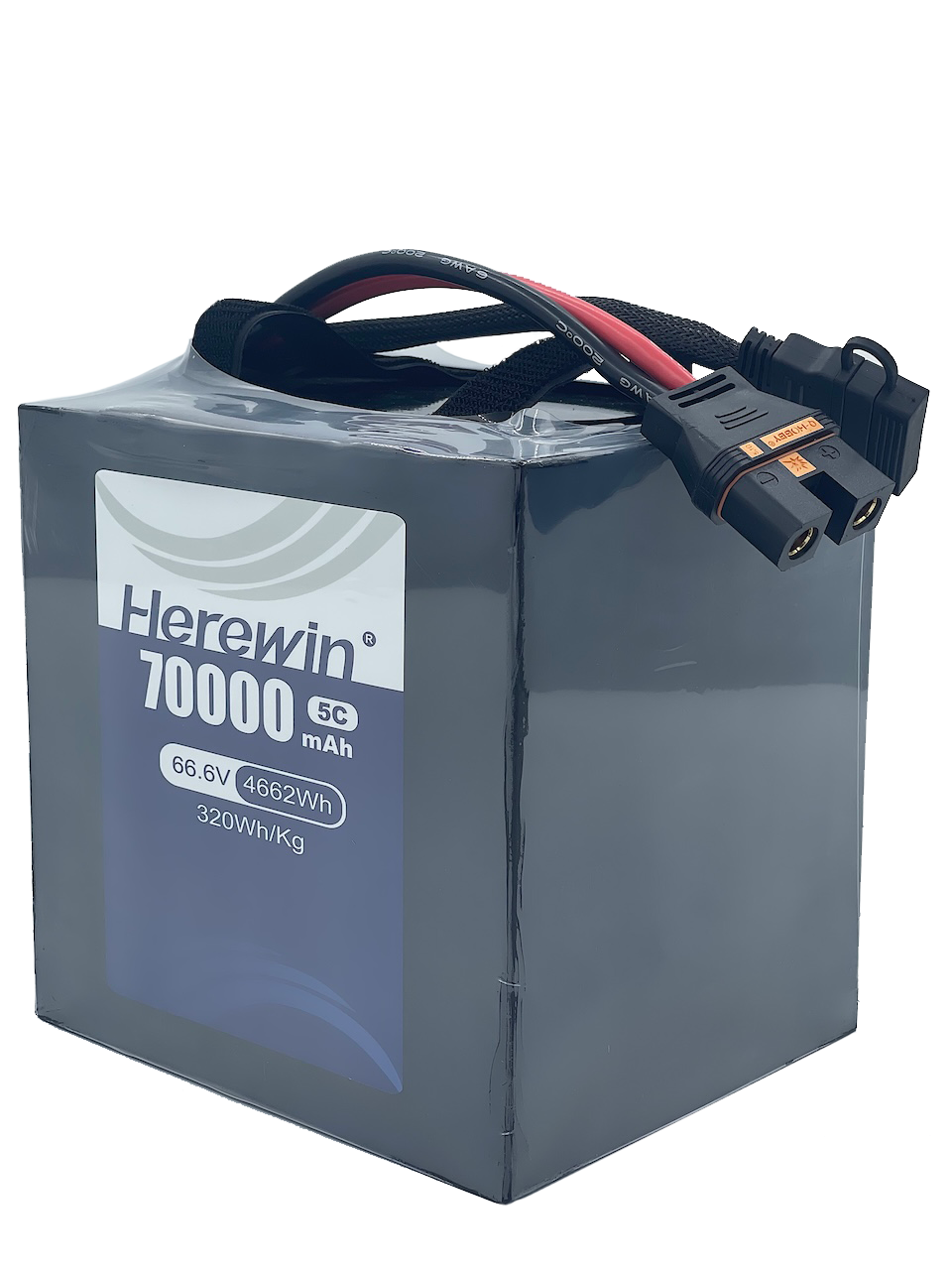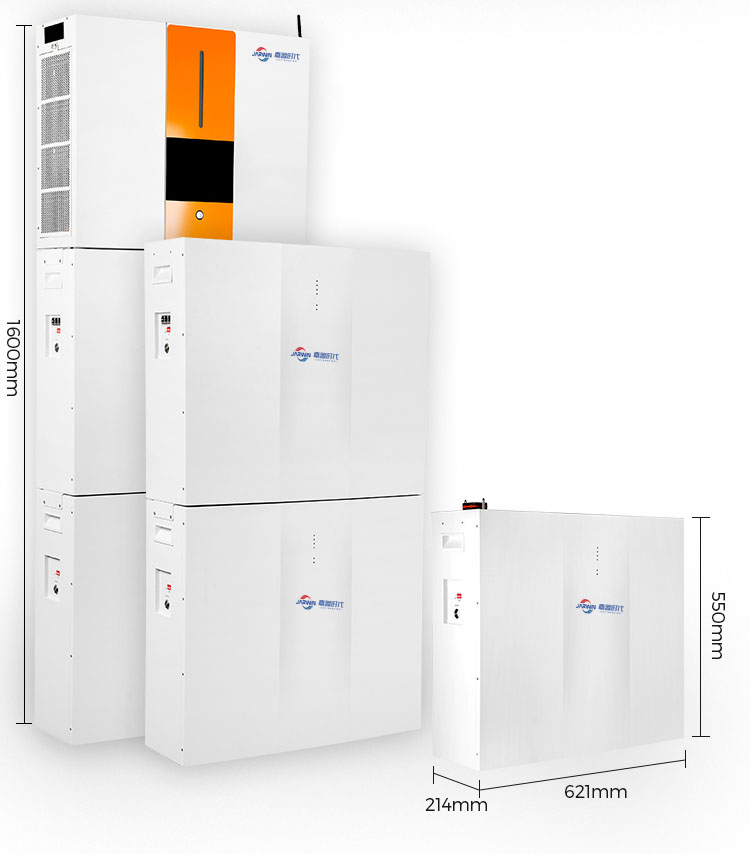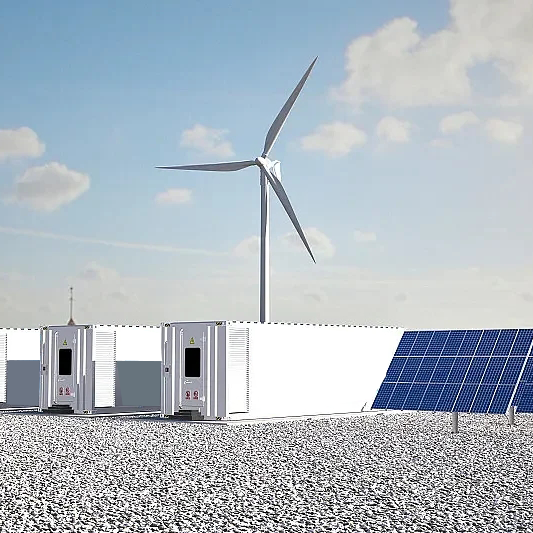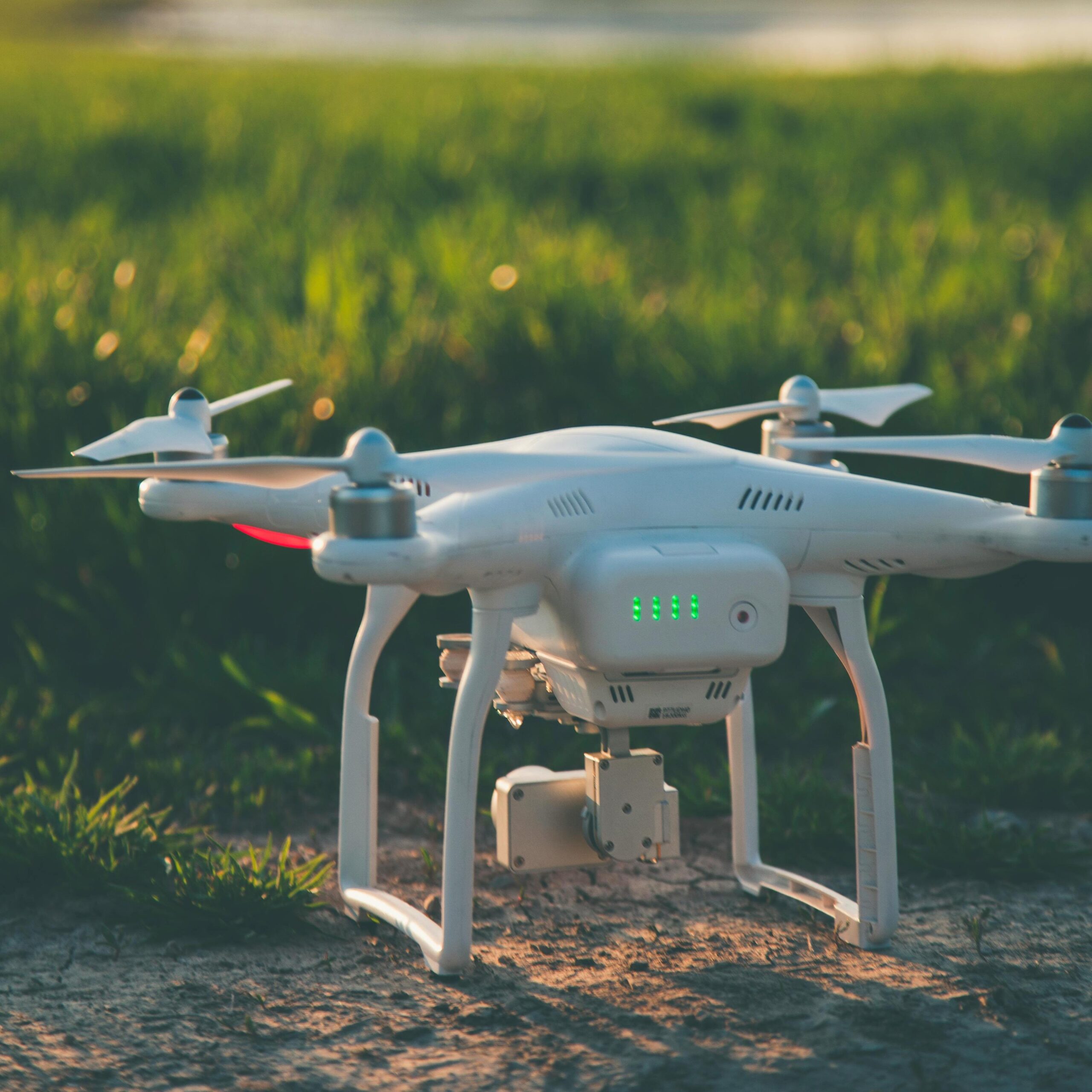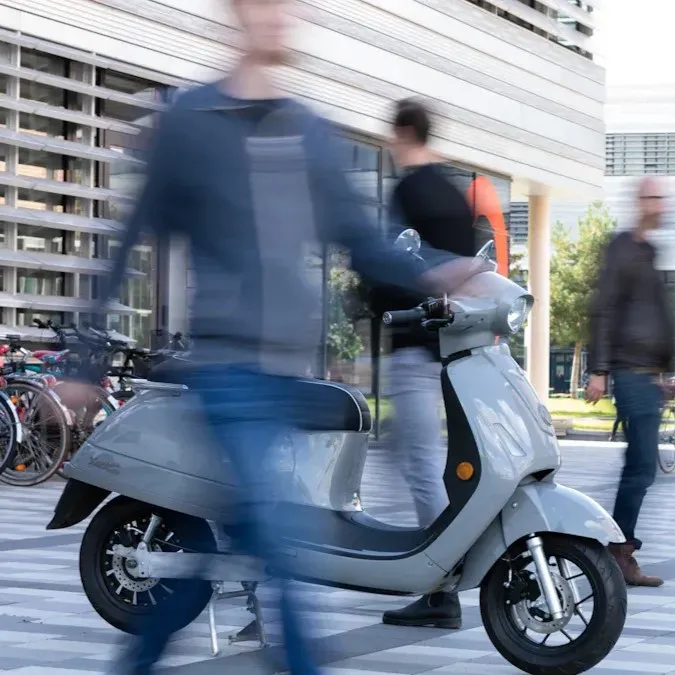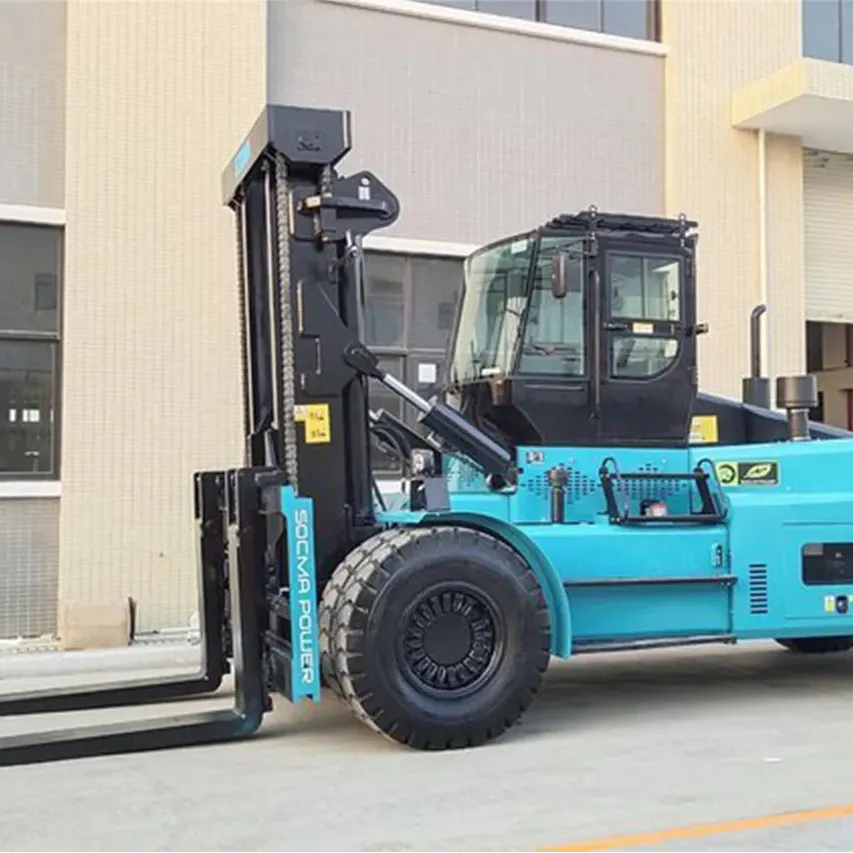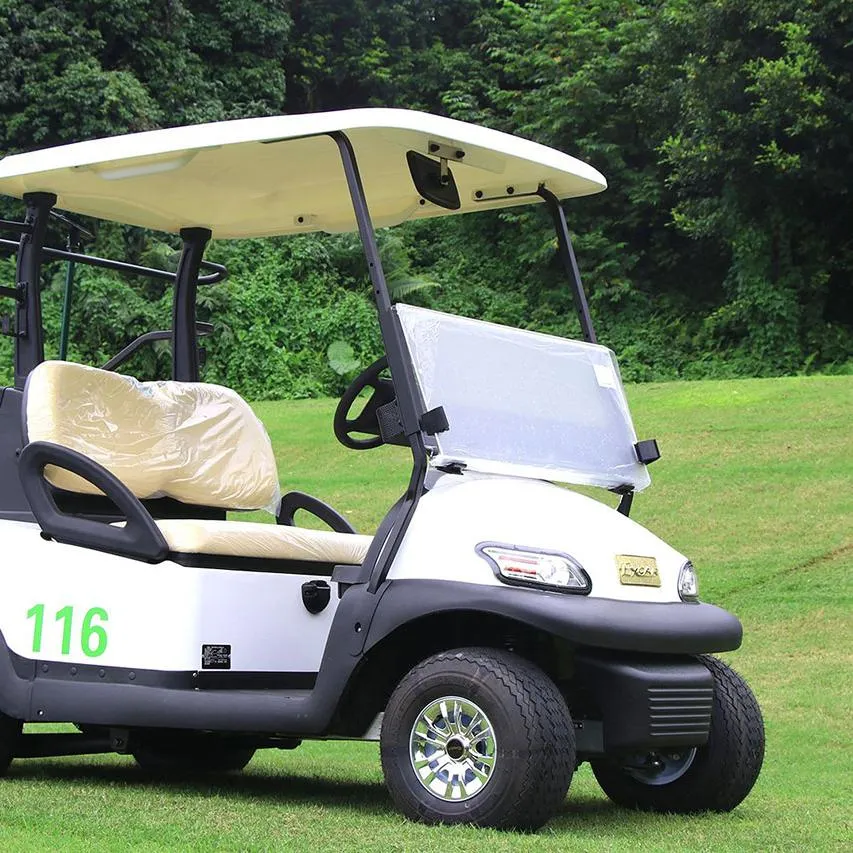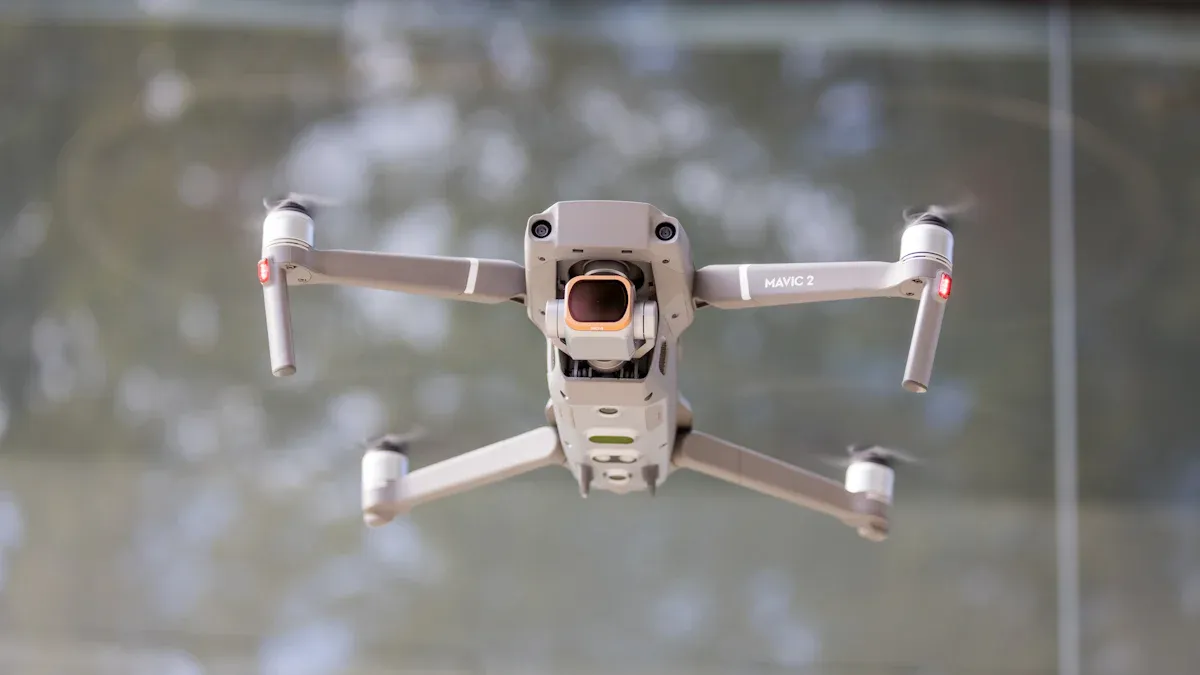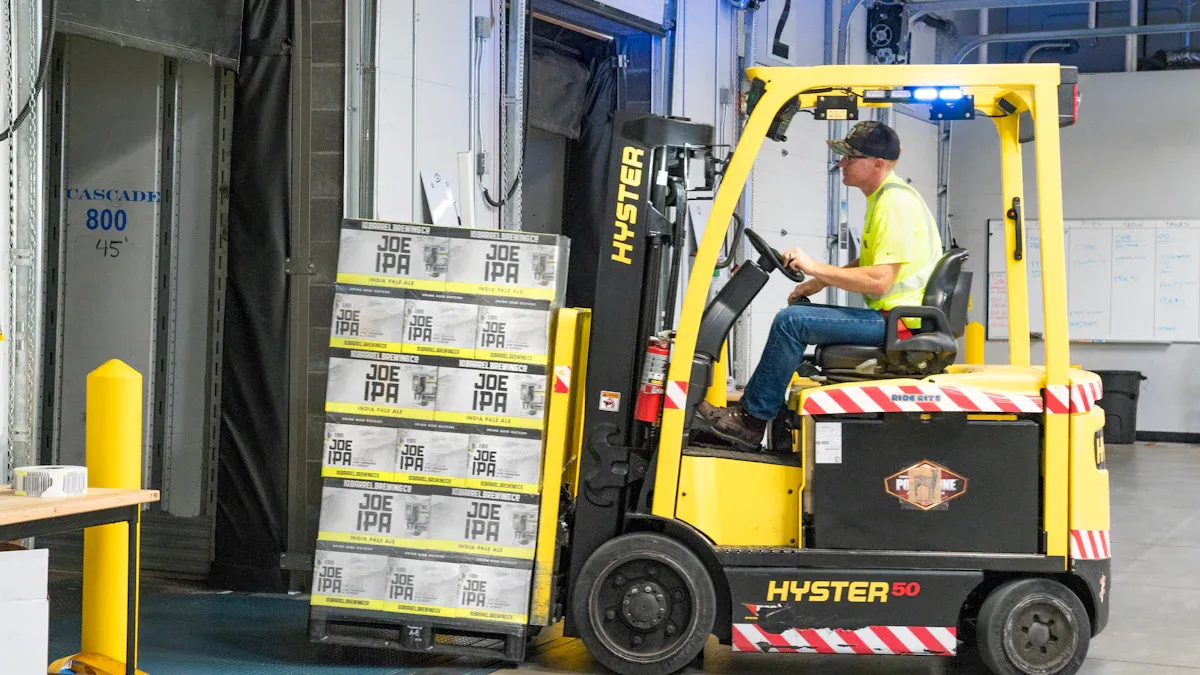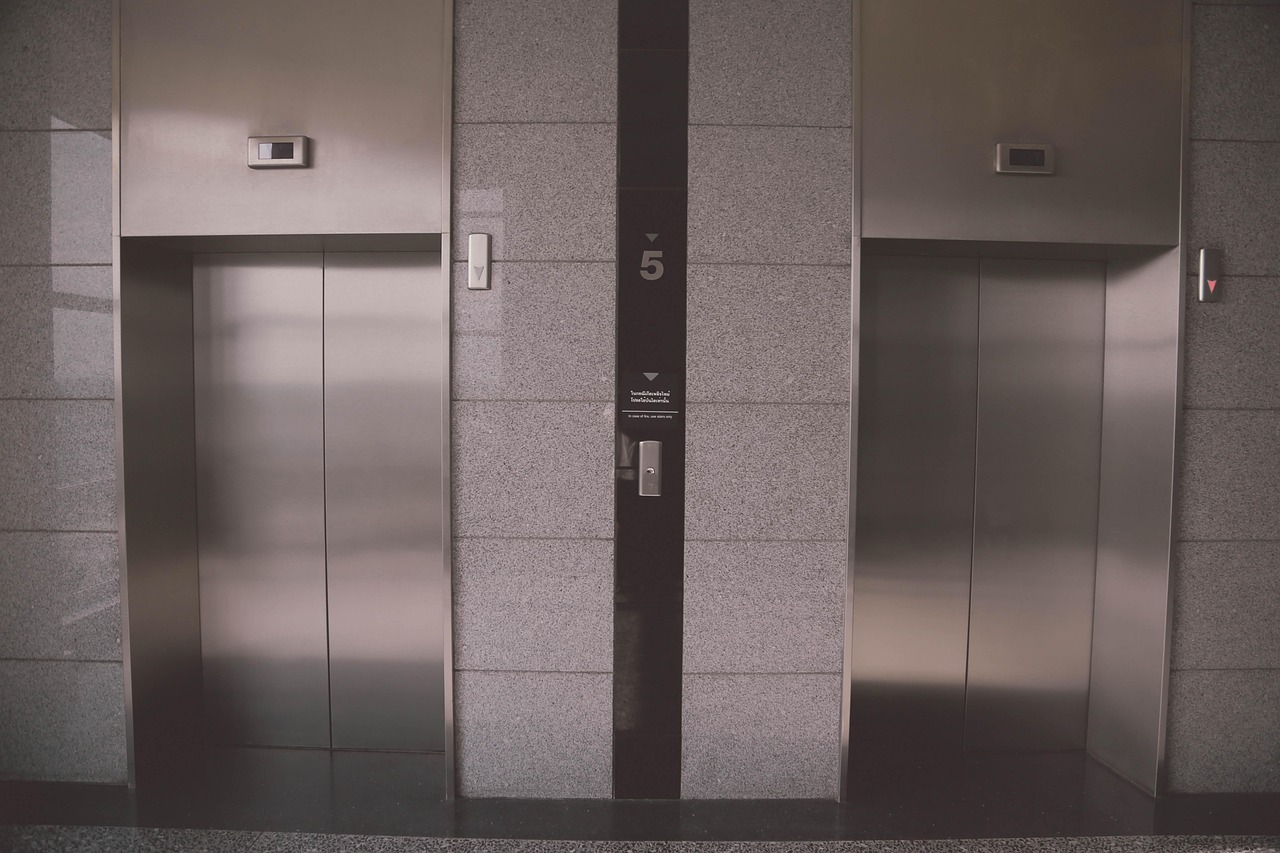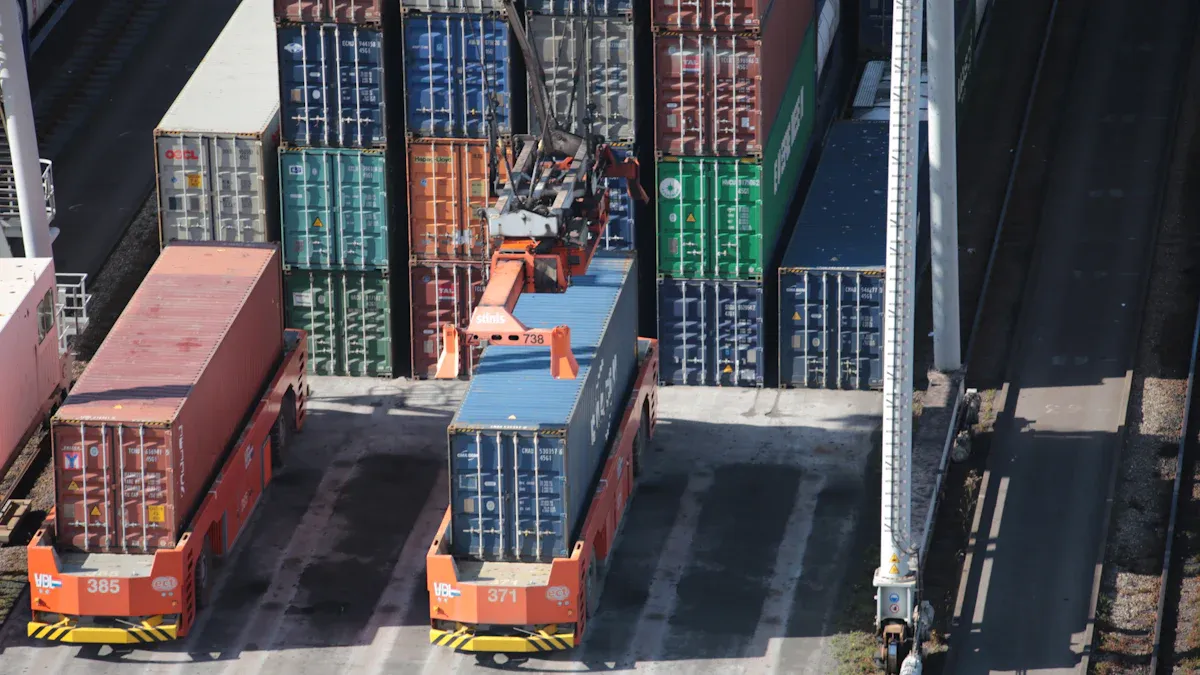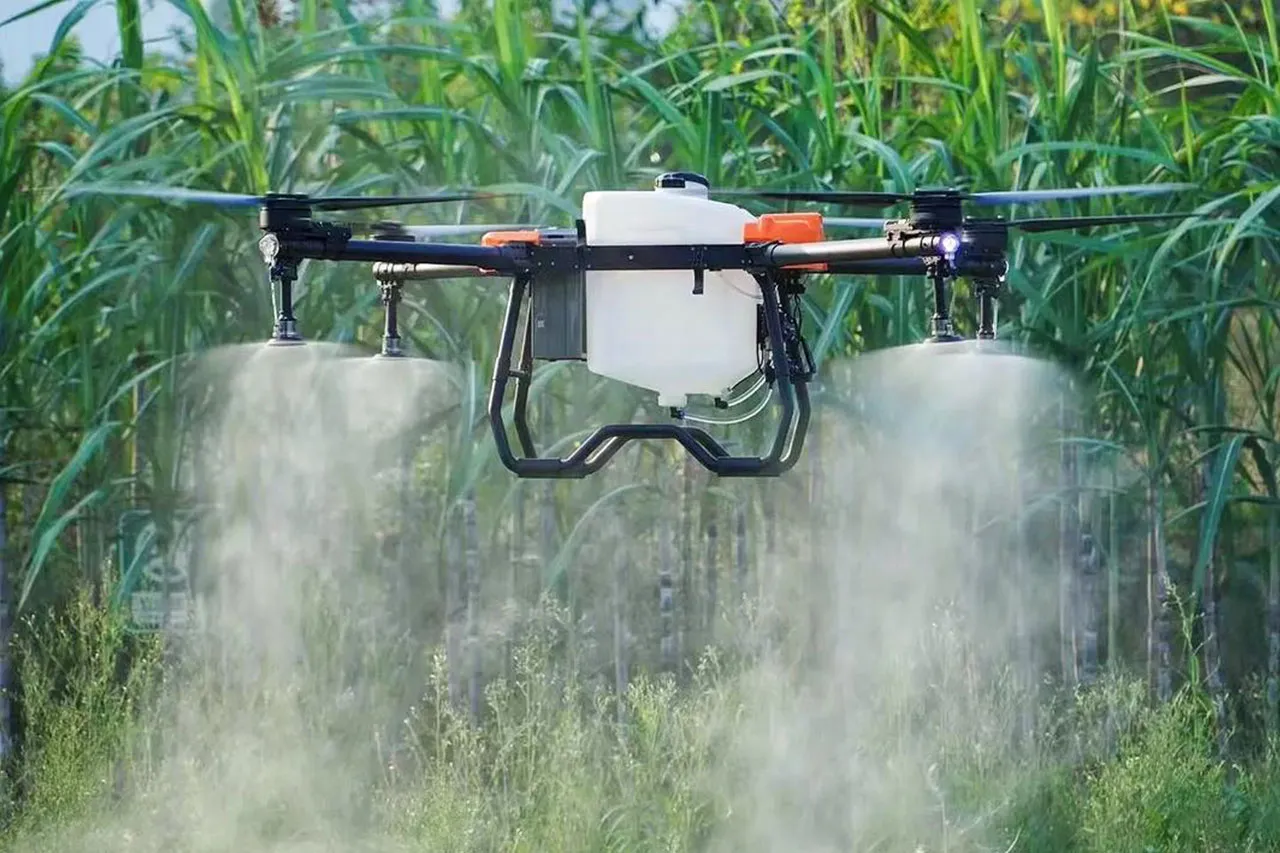
As drone technology rapidly evolves, battery performance remains a critical factor influencing flight duration, operational stability, and safety. With growing adoption in industrial, agricultural, and aerial imaging sectors, the demand for efficient, high-performance power solutions continues to rise.
Market Trends of Soft-Pack Batteries
In the evolving drone industry, flight endurance, payload efficiency, and thermal safety are mission-critical. Soft-pack LiPo batteries are fast becoming the preferred power solution for both professional and commercial UAVs. This guide explores the core benefits of soft-pack LiPo batteries, explains why they outperform traditional hard-shell options, and highlights what sets Herewinpower’s batteries apart in 2025.
Why Choose Soft-Pack LiPo Batteries for UAVs?
High Energy Density, Low Weight
Soft-pack batteries use advanced materials to deliver higher energy per gram compared to hard-shell counterparts. This allows drones to fly longer, carry more, and operate more efficiently in data-heavy or surveillance-intensive missions.
Flexible, Space-Saving Design
Their slim, customizable shape fits snugly into various drone frames. The use of aluminum-laminated film reduces battery mass, freeing space for additional sensors or modules while improving overall agility.
Efficient Thermal Dissipation
The soft-pack structure and superior material conductivity allow for faster heat release during heavy loads or high-speed flights. This reduces overheating risks and supports performance in high or low temperature extremes.
Rapid Charging, Long Lifecycle
Herewinpower’s soft-pack LiPo batteries support rapid charging—up to 80% in 30 minutes—and deliver 650 to 750 cycles under typical conditions, with over 1000 cycles achievable through optimized usage. This balance of fast turnaround and extended service life is ideal for high-utilization drone fleets, helping reduce downtime and maximize long-term ROI.
Unique Advantages of Herewinpower Batteries
Semi-Solid Lithium Technology
Herewinpower’s Soft-pack cells feature a gel-like electrolyte that enhances energy density and stability, reduces leakage risk, and prevents thermal runaway compared to traditional liquid electrolytes.
Reliable Performance in Extreme Conditions
Designed for operation between -20°C and 60°C, Herewinpower batteries maintain consistent power output in harsh environments such as cold fields or desert heat.
Advanced Battery Management System (BMS)
Integrated intelligent BMS monitors voltage, temperature, and charge cycles in real-time, protecting against overcharge, over-discharge, and overheating to extend lifespan and ensure safety.
Market Applications of Soft-Pack UAV Batteries
Soft-pack UAV batteries are widely adopted across various drone missions thanks to their lightweight design, high energy density, and effective thermal management. These advantages make them well-suited for diverse operational scenarios.
Aerial Photography & Industrial Drones
Drones used in aerial imaging and industrial applications often require long flight times and the ability to carry sensitive, high-precision equipment. Herewinpower’s soft-pack batteries provide the necessary endurance and reliability, supporting tasks such as surveying, mapping, and infrastructure inspection with extended mission duration.
Agriculture & Rescue Missions
In agriculture, drones are commonly deployed for crop spraying and monitoring large fields, demanding batteries that sustain long, consistent flights. For rescue and emergency response, rapid deployment and reliable power supply are critical. Soft-pack batteries deliver consistent performance and fast recharge capabilities, enabling drones to operate effectively in these time-sensitive scenarios.
Versatile Compatibility
Soft-pack batteries offer flexible form factors and robust performance, making them compatible with a wide range of UAV types — from lightweight racing drones to heavy-lift industrial models. This versatility enables manufacturers and operators to select batteries tailored to specific mission profiles.
Key Factors When Selecting UAV Batteries
When selecting the right soft-pack UAV battery, consider these key factors:
Factor | What It Means |
|---|---|
Capacity | Determines flight time. Higher capacity means longer flight but adds weight. |
Voltage | Must match drone motors and electronics to avoid damage. |
Discharge Rate (C) | Indicates how fast the battery can deliver power; racing drones require high C-rates for bursts of power. |
Size and Weight | Must fit your drone and not be too heavy to impact performance. |
Connector Type | Should match your drone’s system for stable connection. |
Kimia Baterai | Soft-pack lithium batteries are light and energy dense but need careful handling. |
Safety Features | Overcharge protection, thermal sensors, and other safety measures keep your battery safe. |
Brand Reputation | Choosing trusted brands ensures quality and support. |
Siklus Hidup | More charge-discharge cycles mean longer battery lifespan. |
Matching Battery to Drone Type
Selecting the right battery is essential to optimizing drone performance, flight time, and operational safety. Different drone applications require batteries with characteristics tailored to their specific mission needs.
Racing Drones:
FPV racing drones focus on speed and agility. They typically use medium to high-capacity batteries with high discharge rates (often above 45C) to deliver quick bursts of power during fast maneuvers. Lightweight design is important to maintain competitive performance.Aerial Photography Drones:
For photography and filming, longer and stable flight times are key. These drones usually use higher-capacity batteries with moderate discharge rates to provide steady power and ensure smooth, consistent camera operation over extended flights.Industrial & Mapping Drones:
Industrial drones used for tasks like mapping, logistics, or agriculture demand larger-capacity batteries with reliable thermal performance and extended cycle life. Battery weight generally stays below about 20–25% of the drone’s takeoff weight to maintain flight efficiency and control.
By matching battery specs—such as capacity, voltage, and discharge rate—to your drone type and mission profile, you can optimize performance while reducing risks of battery stress or failure during flight.
Catatan: Always check your drone’s motor specs, connector type, and operating conditions to ensure battery compatibility and safety
Drone Battery Performance
Impact on Flight Time
The battery you choose directly affects your drone’s flight duration. Soft-pack lithium polymer (LiPo) batteries provide a lightweight design with high energy density, enabling longer flight times without adding excessive weight. However, if the battery is too heavy, it will reduce flight time because the drone must exert more effort to stay airborne.
Over time, all batteries gradually lose capacity, resulting in shorter flights and the possibility of overheating. Swelling, leaks, or other physical damage are clear signs that the battery is no longer safe to use and should be replaced immediately to avoid risk.
Soft-pack LiPo batteries typically support hundreds of charge cycles, depending on usage and care. Proper battery maintenance and using high-quality batteries help ensure optimal flight performance and safety.
Performance and Safety Features
New drone batteries have smart features for safety and longer flights. Battery Management Systems, or BMS, watch the battery’s voltage, current, and temperature. These systems keep the cells balanced and warn you if something is wrong. Some BMS can connect to the cloud for updates and checks. Advanced BMS can find problems early, like getting too hot or cell damage. They can fix small issues before they get worse. Some batteries are made to work in both hot and cold weather.
Fitur | Makanan Pendamping ASI (MPASI) Pintar | |
|---|---|---|
Balancing Method | Passive (resistors) | Active (energy transfer) |
Data Analytics | Basic monitoring | Predictive algorithms, AI/ML |
Communication Interface | Limited | Advanced (CAN, UART, Bluetooth) |
Adaptability | Fixed parameters | Self-learning adjustments |
Customizable Settings | No | Ya. |
Fast charging is important too. Modern lithium batteries can charge up to 80% in about 30 minutes, significantly reducing downtime between flights. Multi-channel chargers allow simultaneous charging of multiple batteries, which is especially useful for frequent drone users.
herewinpower Innovation
Herewinpower produces advanced lithium soft-pack batteries using semi-solid technology, making them safer and lighter. These batteries perform reliably across a wide temperature range, from -20°C to 60°C. Equipped with a smart Battery Management System (BMS), they continuously monitor voltage, temperature, and current to protect against overcharging, short circuits, and overheating.
Herewinpower batteries support fast charging—reaching up to 80% charge within approximately 30 minutes—and utilize recycled materials to reduce environmental impact. Their high energy density allows drones to carry heavier payloads without significantly reducing flight time, benefiting applications like delivery, agriculture, and rescue missions. Additionally, Bluetooth connectivity lets users monitor battery health conveniently via smartphone apps.
These features make Herewinpower batteries a strong choice for enhancing drone safety, reliability, and performance.
Caring for Your Drone Battery
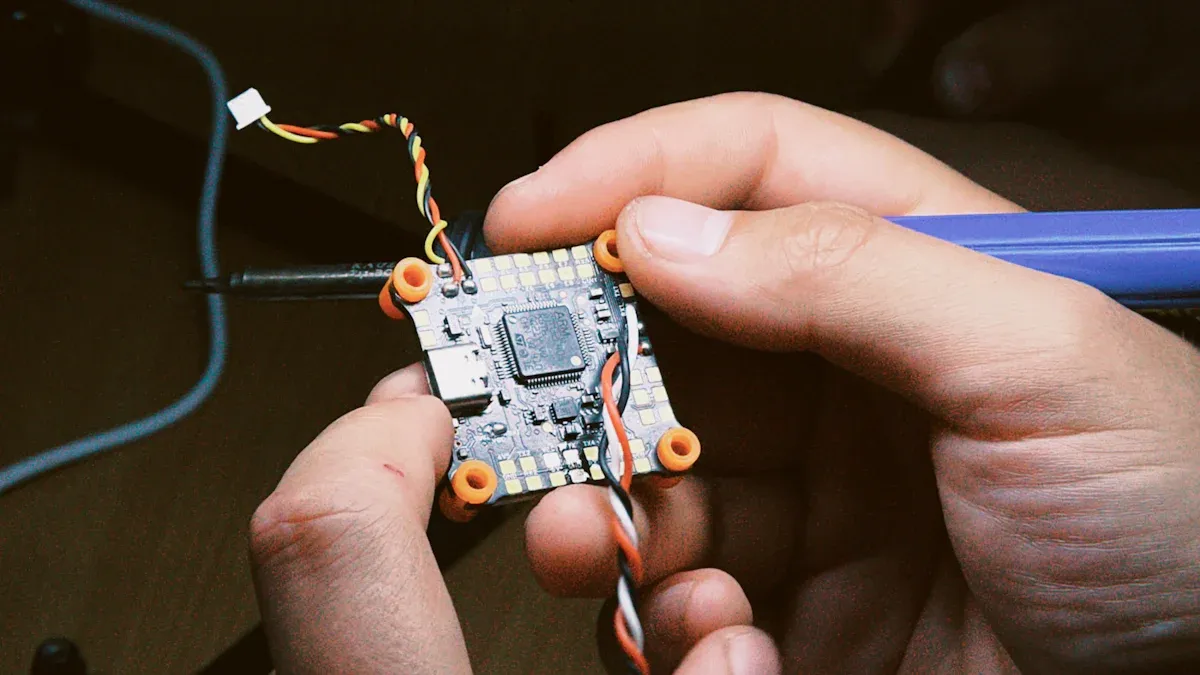
Charging and Storage Tips
You can keep your lithium battery safe by charging it the right way. Always use a charger made for lithium batteries. Make sure your charger can balance the cells. Never leave your battery alone when it is charging. Put it in a fireproof bag or on a safe spot, away from things that can burn. Charge your battery at 1C or less. For a 5000mAh battery, set the charger to 5A or lower. Charging slowly helps your battery last longer.
After you fly your drone, do not leave the battery fully charged if you will not use it soon. Discharge it to about 3.8 volts per cell. Store your battery in a cool, dry place. Keep it away from sunlight and heat. Herewinpower says to use only approved chargers. Check your battery for swelling or damage before every flight.
Tip: Let your battery cool down before charging again. Charging a hot battery can hurt it.
Here is a table that shows how storage temperature and charge level change battery life:
Storage Temperature | Charge Level | Estimated Capacity Retained After 1 Year |
|---|---|---|
0°C (32°F) | 40% | ~98% |
25°C (77°F) | 40% | ~96% |
40°C (104°F) | 40% | ~85% |
0°C (32°F) | 100% | ~94% |
25°C (77°F) | 100% | ~80% |
40°C (104°F) | 100% | ~65% |
If you store your battery at 40-60% charge and in a cool place, it will last longer.
Extending Battery Life
You can help your lithium battery last longer by using good habits:
Do not overcharge or over-discharge. Keep each cell between 3.2V and 4.2V.
Only use chargers and accessories the maker says are safe.
Clean the battery ends to stop rust.
Calibrate your battery as your drone manual says.
Store your battery at 3.8-3.9V per cell if you will not use it for a while.
Let your battery rest and cool down between flights.
Note: Check your battery often for puffing, cracks, or leaks. Get a new one if you see any damage.
Safety Best Practices
You should always be careful with lithium batteries. Follow these steps to stay safe:
Check your battery before every use. Look for swelling or damage.
Use a fireproof bag for charging and storage.
Never charge a battery that is damaged or swollen.
Let the battery cool after use before charging.
Do not put your battery in very hot or cold places.
Take old or damaged batteries to a recycling center. Do not throw them in the trash.
Trust the smart BMS in herewinpower batteries to watch temperature and stop charging if needed.
Safety first: Keep a fire extinguisher close when charging lithium batteries.
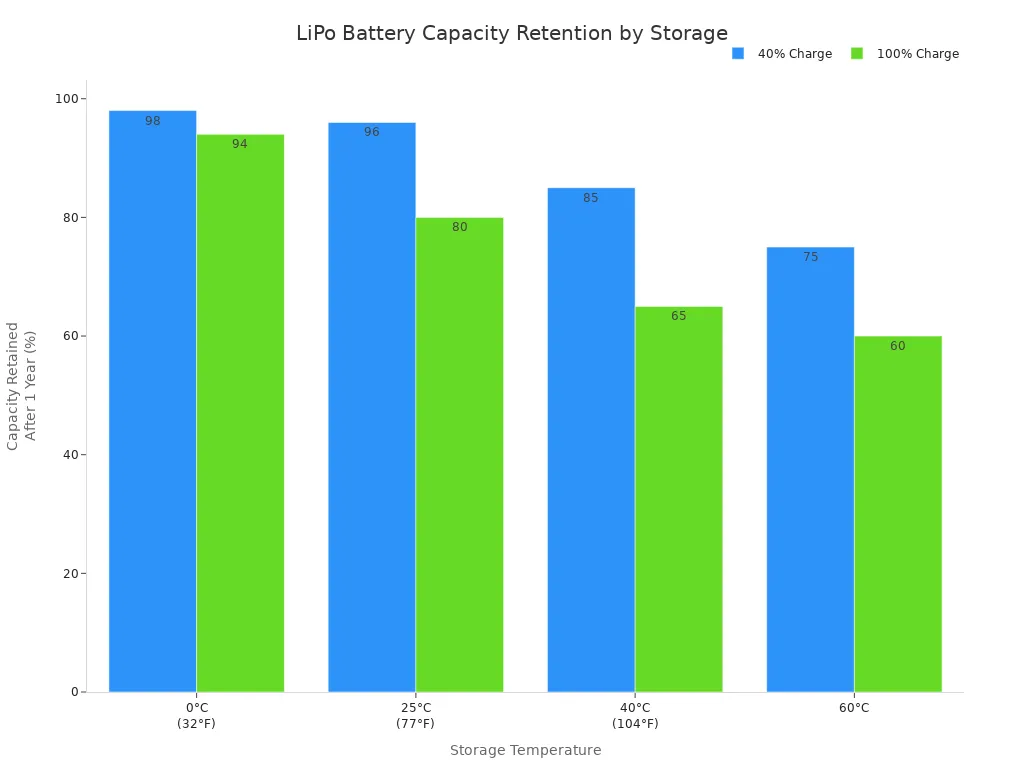
If you follow these tips, your lithium battery will last longer and your drone will be safer.
Picking the right battery lets your drone fly longer and work better. You need to check things like voltage, capacity, and discharge rate. These must fit what your drone needs for safe flights. Some brands, like herewinpower, use new tech for longer flights. They also charge fast and have strong safety features. Always follow battery care tips to keep it safe and make it last longer.
Impact on Performance and Safety | |
|---|---|
Voltage | Gives the right power to your drone |
Capacity | Changes how long and heavy your drone flies |
Discharge Rate | Gives enough power for each flight |
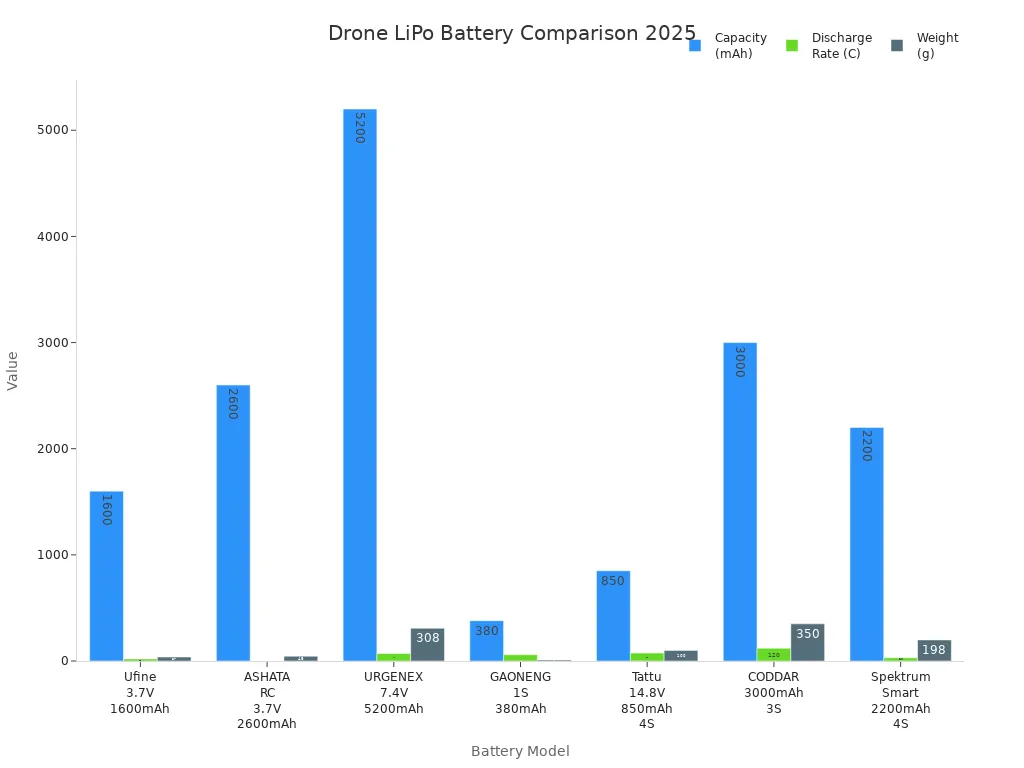
To learn more or see new battery choices, go to herewinpower’s website.
PERTANYAAN YANG SERING DIAJUKAN
How do you choose the right soft-pack LiPo battery for your drone?
You should check your drone’s manual for voltage, size, and connector type. Choose a soft-pack LiPo battery with enough capacity (mAh) for your desired flight time. Make sure the C rating (discharge rate) matches your drone’s power requirements. Always buy from trusted brands with proven safety records.
Why does your drone’s soft-pack LiPo battery get warm during use?
Batteries generate heat when delivering high current quickly, which is normal. Soft-pack LiPo batteries have better thermal management but can still get warm under heavy loads. If the battery feels excessively hot, stop using it and allow it to cool before charging to avoid damage.
How can you tell if your soft-pack LiPo battery needs replacing?
Check for swelling, leaks, cracks, or physical deformities. If flight time significantly decreases or the battery fails to hold a charge, it’s time to replace it. Regularly inspect batteries before flights to ensure safety.
Can you use Herewinpower soft-pack batteries in any drone?
Herewinpower soft-pack batteries are compatible with many drone models. However, always verify the battery’s size, voltage, and connector match your drone. Custom options are available for special applications. Contact Herewinpower for technical support if needed.
What is the best way to store your soft-pack LiPo battery?
Store the battery at about 40–60% charge.
Keep it in a cool, dry place away from direct sunlight and heat sources.
Use fireproof bags during charging and storage for extra safety.
Regularly inspect the battery for any signs of damage or swelling.

